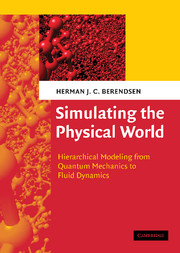Preface
Published online by Cambridge University Press: 05 June 2012
Summary
This book was conceived as a result of many years research with students and postdocs in molecular simulation, and shaped over several courses on the subject given at the University of Groningen, the Eidgenössische Technische Hochschule (ETH) in Zürich, the University of Cambridge, UK, the University of Rome (La Sapienza), and the University of North Carolina at Chapel Hill, NC, USA. The leading theme has been the truly interdisciplinary character of molecular simulation: its gamma of methods and models encompasses the sciences ranging from advanced theoretical physics to very applied (bio)technology, and it attracts chemists and biologists with limited mathematical training as well as physicists, computer scientists and mathematicians. There is a clear hierarchy in models used for simulations, ranging from detailed (relativistic) quantum dynamics of particles, via a cascade of approximations, to the macroscopic behavior of complex systems. As the human brain cannot hold all the specialisms involved, many practical simulators specialize in their niche of interest, adopt – often unquestioned – the methods that are commonplace in their niche, read the literature selectively, and too often turn a blind eye on the limitations of their approaches.
This book tries to connect the various disciplines and expand the horizon for each field of application. The basic approach is a physical one, and an attempt is made to rationalize each necessary approximation in the light of the underlying physics.
- Type
- Chapter
- Information
- Simulating the Physical WorldHierarchical Modeling from Quantum Mechanics to Fluid Dynamics, pp. xi - xivPublisher: Cambridge University PressPrint publication year: 2007

